Abstract
Gastric aminopyrine clearance was measured in human volunteers and dogs with untreated basal secretion, in human volunteers and dogs treated with secretory inhibitors, in dogs treated with histamine, and in patients with pernicious anaemia. When aminopyrine was given as a bolus to man or dog, aminopyrine clearance and the ratio aminopyrine concentration in gastric juice/aminopyrine concentration in plasma showed an initial peak two to three times over steady state levels. When aminopyrine was given with histamine, the peaks were even higher. No peaks occurred when an aminopyrine bolus was given to patients with pernicious anaemia or to healthy volunteers treated with secretory inhibitors. The height of the peaks paralleled the acid secretory rate. The peaks may best be explained by aminopyrine accumulation in the parietal cells and washing out of aminopyrine by volume flow. The steady state levels might reflect both parietal cell function and gastric mucosal blood flow.
Full text
PDF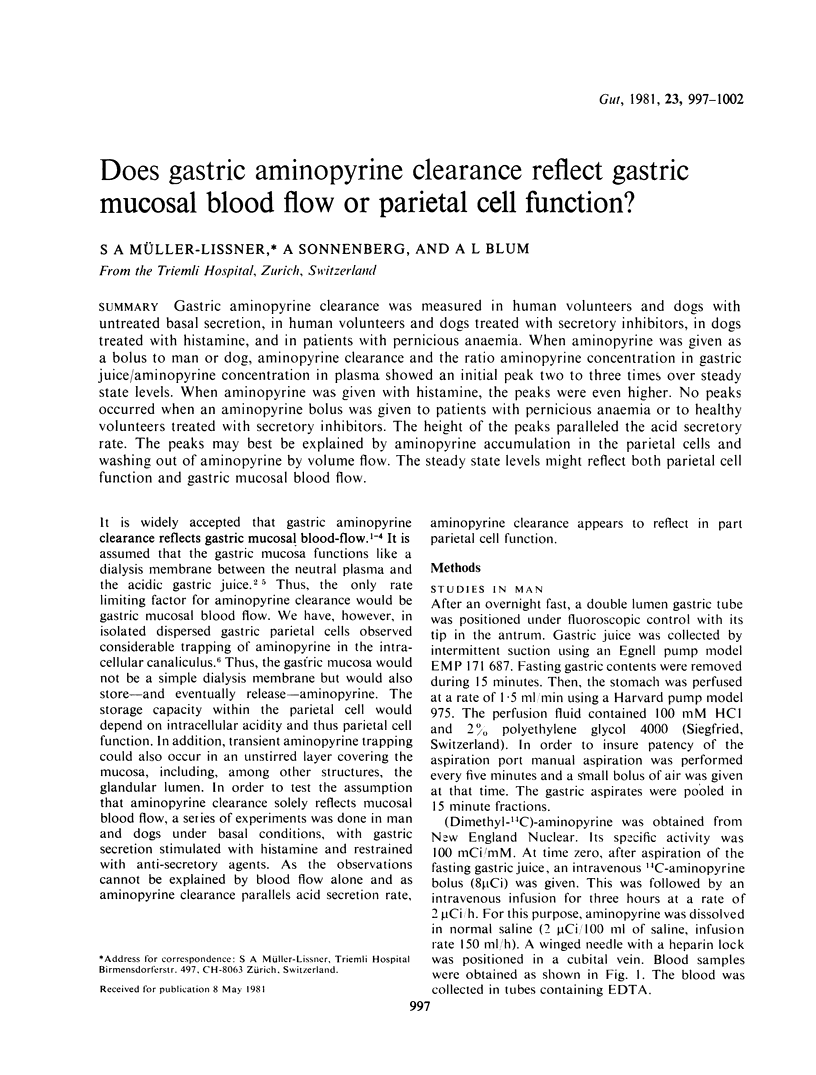
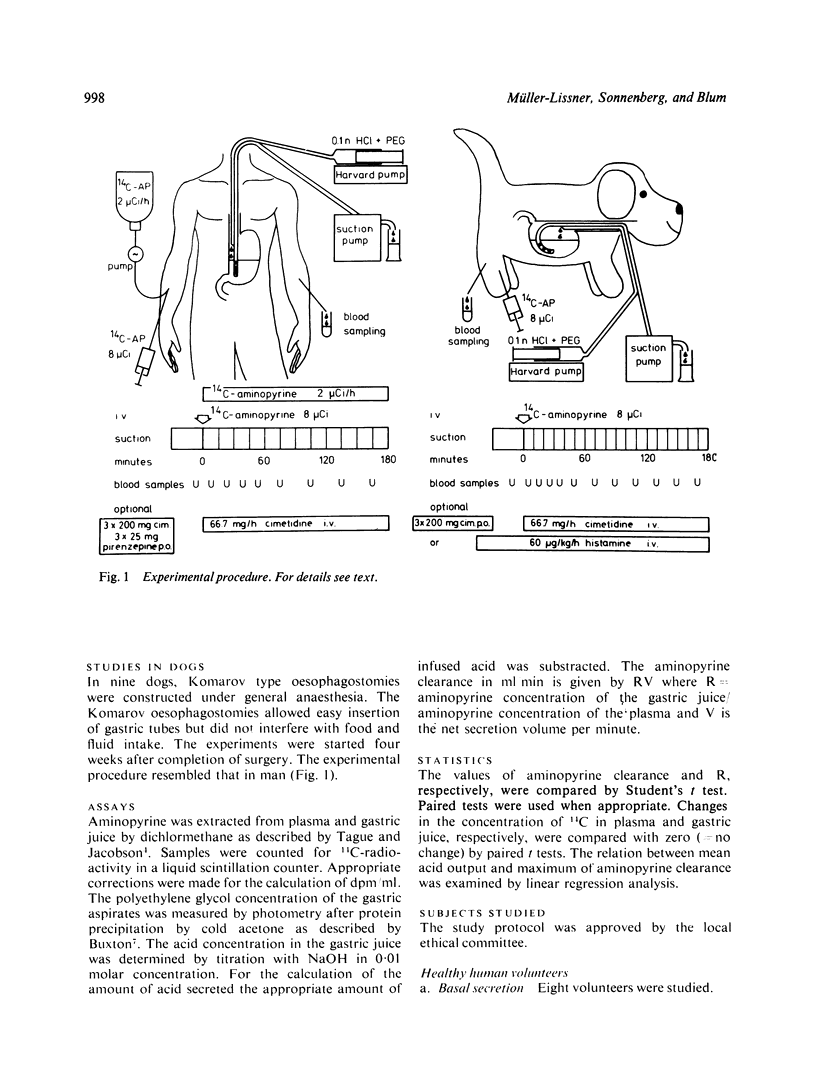
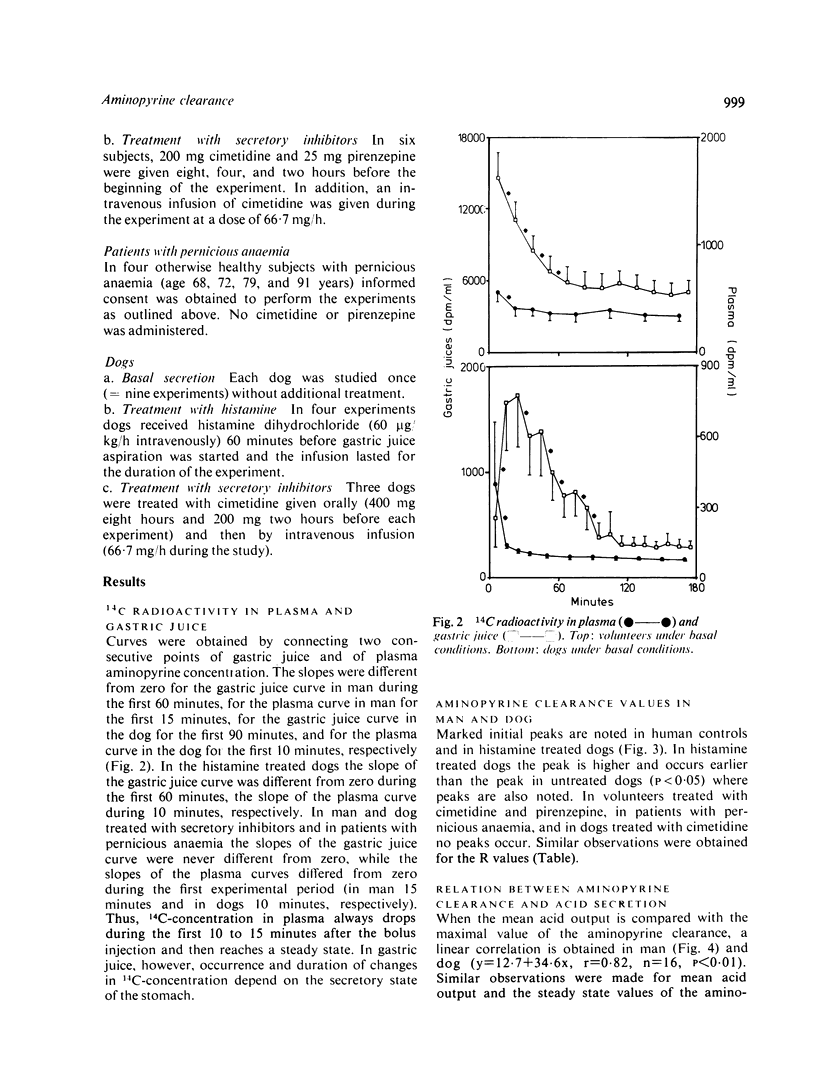
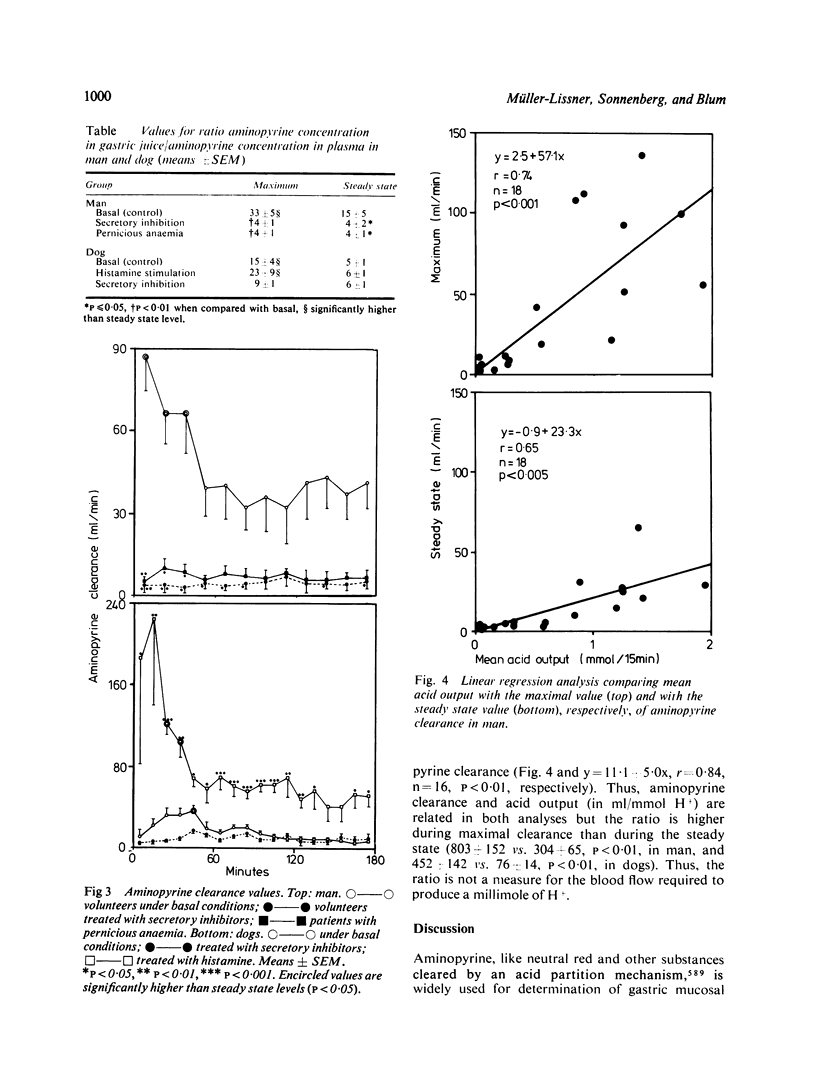
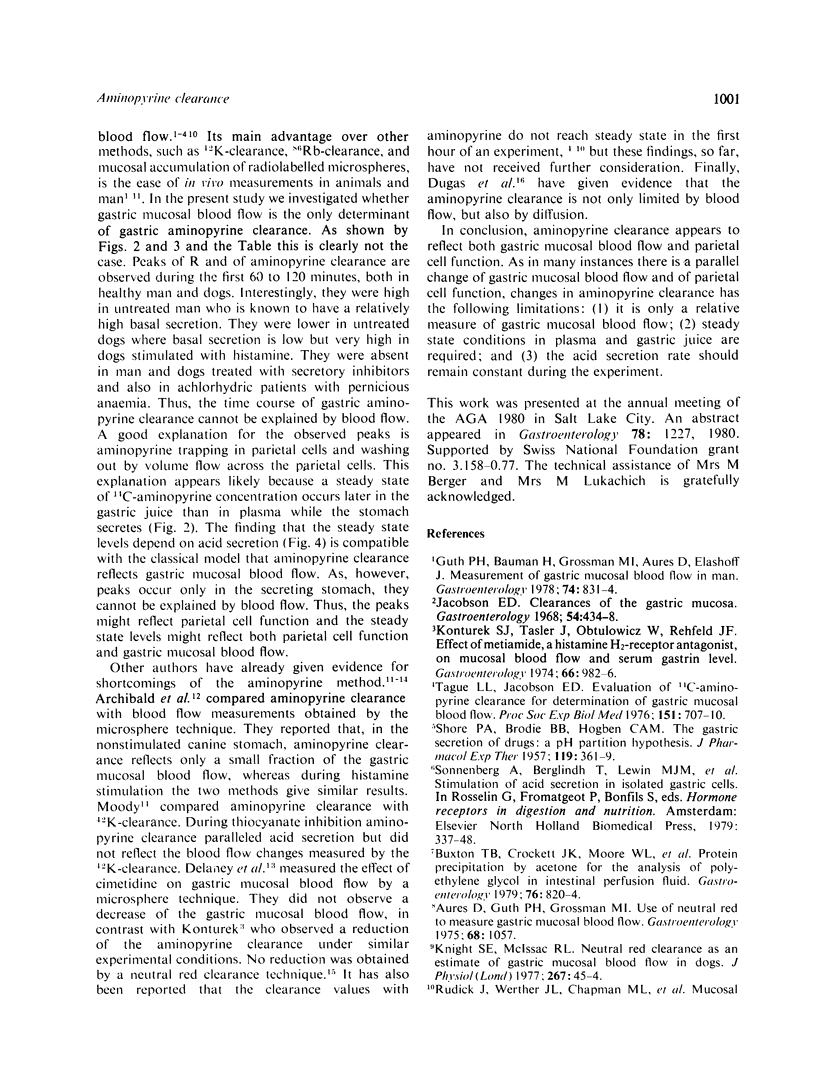
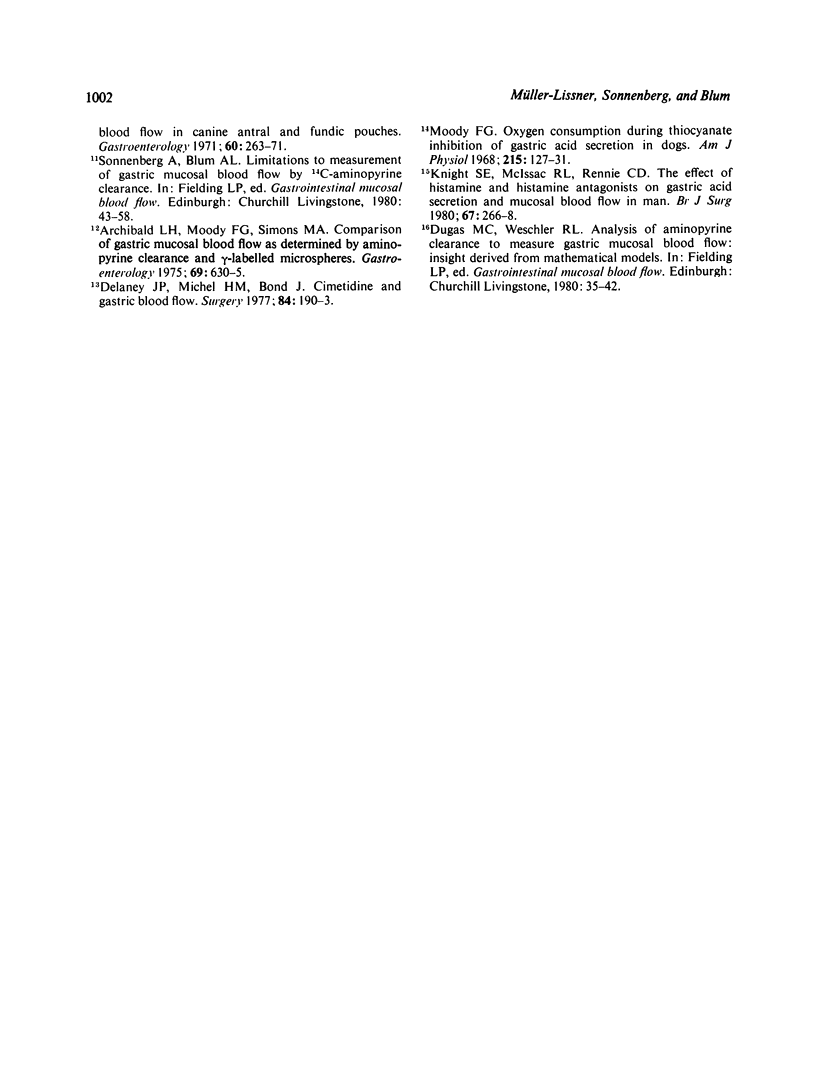
Selected References
These references are in PubMed. This may not be the complete list of references from this article.
- Archibald L. H., Moody F. G., Simons M. A. Comparison of gastric mucosal blood flow as determined by aminopyrine clearance and gamma-labeled microspheres. Gastroenterology. 1975 Sep;69(3):630–635. [PubMed] [Google Scholar]
- Buxton T. B., Crockett J. K., Moore W. L., 3rd, Moore W. L., Jr, Rissing J. P. Protein precipitation by acetone for the analysis of polyethylene glycol in intestinal perfusion fluid. Gastroenterology. 1979 Apr;76(4):820–824. [PubMed] [Google Scholar]
- Delaney J. P., Michel H. M., Bond J. Cimetidine and gastric blood flow. Surgery. 1978 Aug;84(2):190–193. [PubMed] [Google Scholar]
- Guth P. H., Baumann H., Grossman M. I., Aures D., Elashoff J. Measurement of gastric mucosal blood flow in man. Gastroenterology. 1978 May;74(5 Pt 1):831–834. [PubMed] [Google Scholar]
- Jacobson E. D. Clearances of the gastric mucosa. Gastroenterology. 1968 Mar;54(3):434–448. [PubMed] [Google Scholar]
- Knight S. E., McIsaac R. L., Rennie C. D. The effect of histamine and histamine antagonists on gastric acid secretion and mucosal blood flow in man. Br J Surg. 1980 Apr;67(4):266–268. doi: 10.1002/bjs.1800670412. [DOI] [PMC free article] [PubMed] [Google Scholar]
- Moody F. G. Oxygen consumption during thiocyanate inhibition of gastric acid secretion in dogs. Am J Physiol. 1968 Jul;215(1):127–131. doi: 10.1152/ajplegacy.1968.215.1.127. [DOI] [PubMed] [Google Scholar]
- SHORE P. A., BRODIE B. B., HOGBEN C. A. The gastric secretion of drugs: a pH partition hypothesis. J Pharmacol Exp Ther. 1957 Mar;119(3):361–369. [PubMed] [Google Scholar]
- Tague L. L., Jacobson E. D. Evaluation of (14C)aminopyrine clearance for determination of gastric mucosal blood flow. Proc Soc Exp Biol Med. 1976 Apr;151(4):707–710. doi: 10.3181/00379727-151-39290. [DOI] [PubMed] [Google Scholar]


